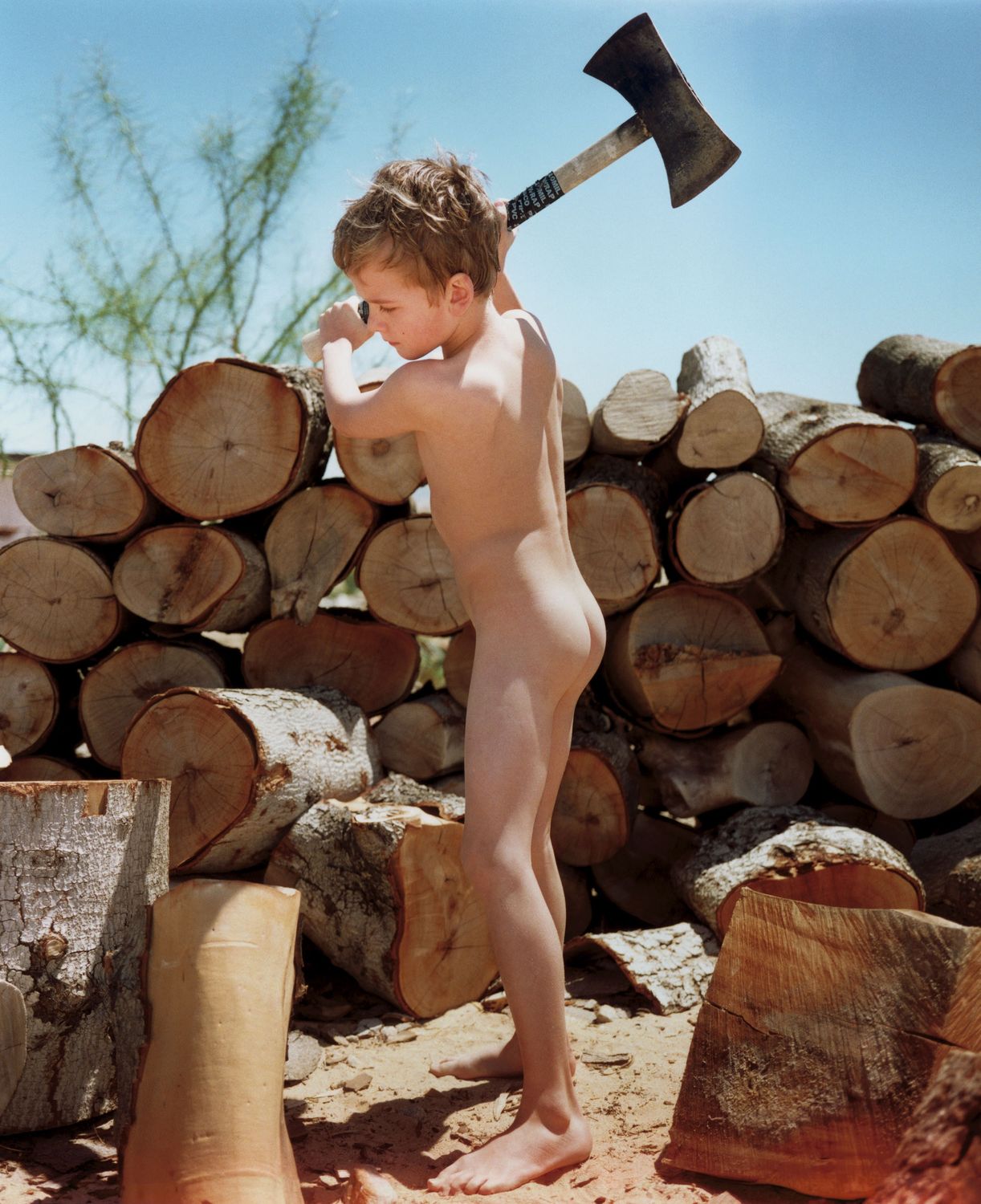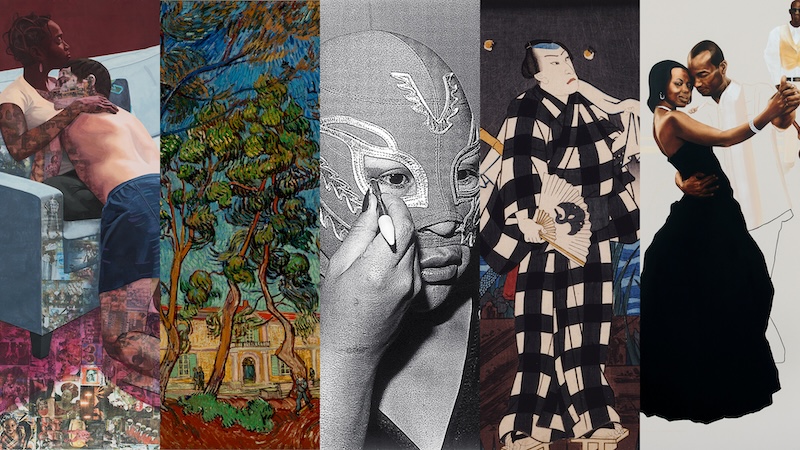
Art in Conversation: Jack Pierson and Catherine Opie
During Art in Conversation, my fellow student educator and I decided to look closely at two photographs found in Still Life with Fish: Jack Pierson’s Self-Portrait #1 and Catherine Opie’s Self-Portrait, 1970. Typically, I gravitate towards choosing artworks from two separate exhibitions, in order to draw up unexpected connections between works. However, when looking at these two photographs in Still Life with Fish, I was compelled to open up a conversation with visitors about why the exhibition’s curators might have chosen to place these works on the same wall.
We began by looking at Pierson’s Self-Portrait #1 (2003), a nearly life-sized photograph of a young boy wielding an ax. After a moment of silent reflection, visitors commented first on the boy’s striking nudity and the danger of his apparent task of chopping wood. We all agreed that the boy looks like he can’t and shouldn’t be attempting this task, and predicted that he would fail. His body appears too frail, his skin too soft and clean, and the ax too heavy for a child to control. Multiple visitors insisted that the whole portrait looks incredibly staged, especially because the task seems unrealistic. We wondered why Pierson might have constructed this image.

In order to approach an answer to the group’s question, we turned to some backstory on the work. Self-Portrait #1 is the first in Pierson’s series of fifteen “self-portraits” from his 2003 book of photographs titled Self-Portrait. The title clearly suggests its subject, but as one visitor asked, how can all fifteen photographs be self-portraits of Pierson, if the series was made in 2003 but depicts men across a wide range of ages? Another visitor answered, “Perhaps this isn’t a photograph of Pierson himself, but still speaks to some part of the artist that he wants to express.” We considered the definition of a self-portrait, and how it might not require an image of the artist himself. Maybe the photograph is a depiction of a child who cannot chop wood though his parents gave given him this chore. Maybe Pierson staged this scene in order to speak to traditional expectations for masculinity and the artist’s own experience. As we moved a few yards over to the next artwork, I asked visitors to keep in mind the theme of assigned expressions of gender.
Gathering around Catherine Opie’s Self-Portrait, 1970 (2008), we considered the image in relation to the photograph next to it, Opie’s Cathy (Plants by Marusya) (1992). One visitor, who was not previously familiar with Opie’s work, immediately jumped into sharing her initial impressions of the pairing: she observed how the child in Self-Portrait, 1970 poses playfully with flexed biceps, while the figure in Cathy, who she guessed was the grown-up version of the child, gazes thoughtfully towards the camera. Notably, this visitor referred to the figure in both portraits with male pronouns, although in both pictures Opie is female. This assumption was understandable, as Opie has identified herself as a butch lesbian, and this became central to our discussion of the works. I explained that Opie’s identity as an out lesbian shapes her artistic practice but does not define it. Much of the artist’s work follows her interest in documenting what she has called “underage American identity,” which has included subjects such as members of her queer community of artists and members of radical sex communities, many of whom identify along a gender spectrum rather than the binary of male or female.

The visitors responded enthusiastically to their new understanding of Opie’s art practice, quickly applying it to their interpretation of Self-Portrait, 1970 while making personal connections to the topic of gender stereotypes. One visitor commented that in the photograph, Opie not only acts tough for the camera through her pose, but also dresses in boy’s clothes and wears a short haircut. Then, the other visitor observed that the photograph appears to be a family photograph of Opie as a child, which leads us to assume that one of her parents was probably behind the camera lens. We wondered why Opie would choose to uncover this family photograph from 1970 in 2008 and label it as her artwork. Since she didn’t actually take the photo, can we even consider it her art? Past conversations with visitors about this question have been contentious. However, that day we all agreed that Opie had transformed the family photo into art because it revealed something special and relevant to the 2008 Catherine Opie.
To close the conversation, we discussed how the two artists used representations of children to make viewers think about assumptions about gender roles. We guessed that the parents’ presence outside the frame might have had some influence on the poses we see. In Self-Portrait #1, we felt the presence of parents who unrealistically expect their son to complete tasks like chopping wood in order to prove his masculinity. In Self-Portrait, 1970, we witness the revealing childhood instincts of Opie, and assume that her Midwestern parents would not have asked their daughter to make the flexing pose. Another layer to the conversation emerged: our assumptions about assumptions about gender roles. How can we know that the nine-year-old Opie’s parents did not encourage her to dress or act the way we see her in Self-Portrait, 1970? Why do we guess that the parents of the child in Self-Portrait #1 expect boys to be strong, or that Pierson disagrees? And finally, how might our own experiences and assumptions of gender stereotyping affect our interpretations of artworks we encounter?




